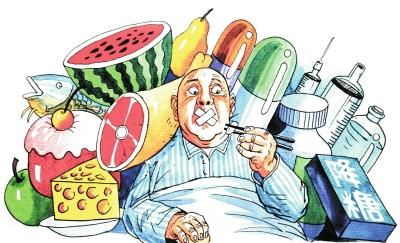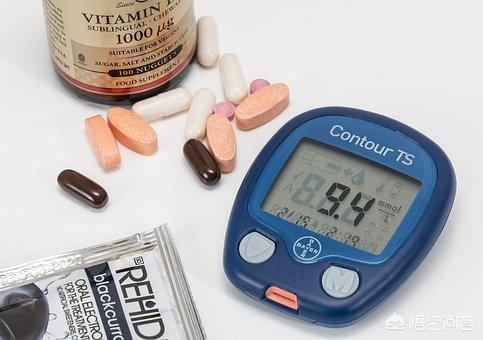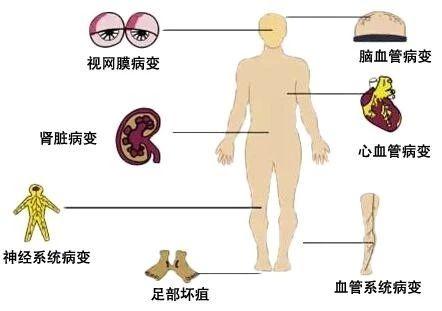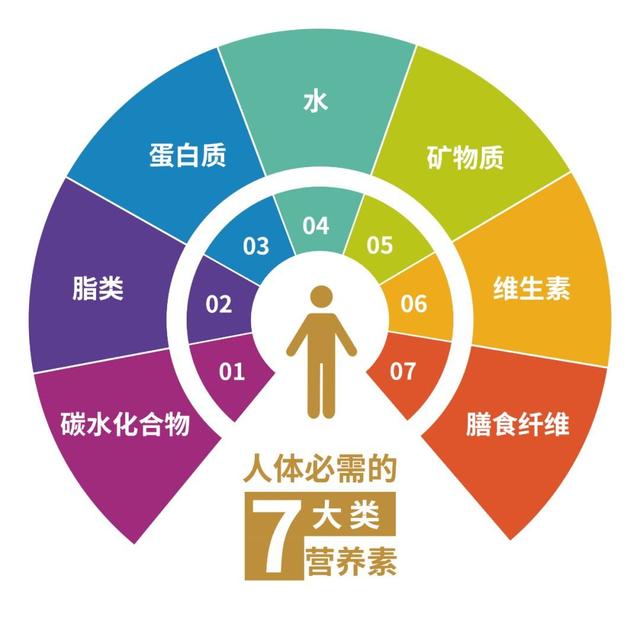What to look for to prevent diabetes?

Doctors recommend: pay attention to these 5 points to prevent complications!
1. Strictly control the patient's blood glucose level, regular fundoscopic examination, and at the same time do a good job of eye care;
2、Strengthen the dietary care, limit the intake of protein and sodium, and strengthen the testing of renal function indexes in order to improve the pathological changes of glomeruli;
3, follow the dietary principles of diabetes, make a reasonable diet plan, pay attention to control the total calorie intake, try to eat more food rich in vitamins and proteins, and prohibit high sugar and high cholesterol food;
4. For patients who smoke, inform them of the hazards of smoking and urge them to quit;
5. At the same time, closely observe the foot skin color, skin temperature, dorsalis pedis arterial pulsation and other blood flow conditions, in order to prevent or early detection of foot blood circulation disorders.
To learn more about diabetes, follow"Southern Health."headline
Search for related columns -"Reverse Diabetes, Lower Your Sugar in Just These 10 Steps!
Answer: 80% of diabetes can be prevented by meeting the following 6 targets!
China Chronic Disease Prospective A seven-year data follow-up of 500,000 elderly people showed that nearly 80% of type 2 diabetes can be prevented by adhering to six healthy lifestyles or indicators.

The six individual indicators are:
1. Maintain a normal body mass index (BMI: 18.5-23.9 kg/m2)
2. Waist-to-hip ratio is up to standard (<0.9 for men and <0.85 for women)
3. Healthy diet (more vegetables and fruits, less red meat and white rice)
4、More exercise
5. Cessation of smoking
6. Alcohol restriction (<30g/d)
In fact, these are 6 lifestyle or metrics that you can do!
1. Body mass index 18.5-23.9
Excessive body mass index and waist-to-hip ratio, among others, are the most important risk factors that increase the incidence of diabetes in the country, with 43% and 40% of diabetes attributable to these two indicators, respectively.
When overweight, or even reach obesity, or weight like a roller coaster repeatedly, the body's insulin will also be followed by drastic changes, can make insulin sensitivity deterioration, is the emergence of insulin resistance, which leads to the occurrence of diabetes.
BMI = weight (kg)/height squared (m2)
The standard for Chinese adults:
18.5-23.9: appropriate
24-27.9: overweight
28+: obese
2. Waist-to-hip ratio up to standard
Obese people whose fat is mostly distributed in the waist, abdomen and other parts of the body, these people have to be extra careful about the visit of diabetes.
The waist-to-hip ratio is a predictor of obesity, and the smaller the ratio, the healthier it is.
The general female ratio value is below 0.85.
Anything below 0.9 for men is in the healthy range.
However, when the ratio is greater than 1, the risk of developing diabetes increases significantly.
3、Healthy eating: remember the 5 points
Studies have shown that increasing dietary intake of whole grains, fruits and vegetables, fish, and poultry, while reducing dietary intake of red meat, processed foods, sweetened beverages, and starchy foods, can reduce the risk of chronic diseases such as type II diabetes. To prevent diabetes, there are 5 things you can remember about your diet:
(1) Mix it up a bit: don't worry about meat, vegetarian, coarse or fine grains, eat everything, and the more varieties the better;
(2) Lighter: Less salt, less oil, less spicy, light diet is the most stomach-friendly;
(3) Fresher: The fresher and more seasonal the food, the better; eat more natural food and less processed food;
(4) Vegetarian: Green vegetables and tofu keep you safe, and the proportion of meat must be reduced.
(5) Less: Eat 7 or 8 minutes of food at a meal.
4. 150 minutes of exercise per week
To be effective in preventing diabetes, it is important to achieve 150 minutes of moderate-intensity exercise a week, e.g., 30 minutes of exercise five days a week.
Of course, adults who want to better prevent diabetes should also add resistance exercise twice a week, i.e., lifting dumbbells, doing tensioner exercises and other fitness equipment exercises. Only with such exercises can you increase muscle energy and truly prevent diabetes.
So make yourself walk more on your way from work ~ moving is better than not moving!
5. Cessation of smoking
A study done by Prof. Pan An of the School of Public Health, Tongji Medical College, Huazhong University of Science and Technology, in collaboration with researchers from the Harvard School of Public Health and the School of Public Health of the National University of Singapore, shows that the risk of diabetes in active smokers is 37% higher compared to non-smokers; and that among non-smokers, the risk of diabetes is 22% higher for those who chronically inhale secondhand smoke than those who do not inhale secondhand smoke. 22 percent.
So it's better to quit smoking, for the sake of the health of those around you, and more importantly, for yourself!
6. Alcohol restriction
Excessive alcohol consumption can damage body organs and cause diseases, causing damage to the pancreatic islets is one of them. When the pancreatic islets are damaged, the release of pancreatic enzymes and insulin will be affected, thus affecting glucose metabolism, leading to disorders of glucose metabolism, accumulation of fat, and ultimately the formation of diabetes.
Studies have recommended drinking less than 30 grams of alcohol per day, in fact the average male liver's tolerance is 40 grams of alcohol per day, and less for women, at around 20 grams. 40 grams of alcohol is equivalent to about 140 milliliters of 35-degree white wine and 1,000 milliliters of beer.
For more quality health articles and health Q&A, to consult with experts on shoulder, neck, waist, leg and joint pain, and to participate in the free delivery of therapeutic instrument, pleaseFollow "Hualuo Health" headline number, you can click on the Hualuo Health headline number menu under the "free machine activities" to enter, you can also send a private message to consult the details].
{!-- PGC_VIDEO:{'status': 0, 'video_md5': 'cbc97631346fc0a38387aee5e6e145d3', 'thumb_height': 360, 'neardup_id': 8364459260711880037, 'vname': 'u300au9ea6u5411u5065u5eb7u300bu4e4bu5982u4f55u901au8fc7u5408u7406u81b3u98dfu9884u9632u7cd6u5c3fu75c5.mp4', 'vu': '25ea352e00ab4056b649ac59a5b689df', 'sp': 'toutiao', 'update_thumb_type': '2', 'vposter': 'https://p3-sign.toutiaoimg.com/mosaic-legacy/18ab00028c70fb129dc4~noop.image?x-expires=1957622139&x-signature=o1xpeEOnfV%2FJmcsgW7Tt%2BTcEMp8%3D', 'vid': '25ea352e00ab4056b649ac59a5b689df', 'thumb_width': 640, 'video_size': {'high': {'h': 480, 'subjective_score': 1, 'w': 854, 'file_size': 4547718}, 'normal': {'h': 360, 'subjective_score': 1, 'w': 640, 'file_size': 3383706}}, 'duration': 149, 'thumb_url': '18ab00028c70fb129dc4', 'md5': 'dae5b23d11eeb826b578f823ac9d4c7c', 'hash_id': 14684398013723426979} --}
What is diabetes?
Diabetes is a disease in which sugar is present in the urine due to elevated blood glucose. It is a chronic disease caused by a combination of genetic and environmental factors, and is divided into two main types: type 1 diabetes and type 2 diabetes.
Type 1 diabetes
It is associated with immune abnormalities and has a young age of onset, mostly less than 30 years old, with symptoms of excessive drinking, urination, food intake, and wasting (the so-called "three more and one less"), and high blood sugar levels.
Type 2 diabetes
It is related to metabolic abnormalities, commonly found in middle-aged and elderly people, with a high incidence in obese people, often accompanied by hypertension, hyperlipidemia, atherosclerosis and other diseases.

Inadequate or poorly functioning insulin is the underlying cause of diabetes mellitus
Insulin is the only glucose-lowering hormone in the body. Insufficient insulin secretion or poor insulin action (also known as "insulin resistance") can lead to disorders of glucose metabolism and elevated blood glucose, accompanied by disorders of fat, protein, and even water, salt, acid, and alkali metabolism, which, if the condition of diabetes is not well controlled, can lead to vascular and neuropathy. If the diabetes is not well controlled, it may lead to vascular and neuropathy.
Once you have diabetes, it follows you around.
The current situation of diabetes is that the number of people suffering from the disease is increasing, and what is more unfortunate is that so far it is still a lifelong disease that cannot be completely cured. Therefore, we also remind sugar lovers that any prescription medicine that promotes a cure for diabetes is a scam and should not be trusted.
But don't be discouraged. With proper control, diabetics can also enjoy a good life. For example, some patients with milder conditions can often keep their blood sugar in a reasonable range without medication and without affecting their life expectancy by adjusting their diet, exercising and changing their bad habits. However, this kind of control and treatment is lifelong and should not be slackened or given up halfway, but should be adhered to all the time.
In the face of some patients with a slightly more serious condition, you can control blood glucose through diet, exercise, monitoring, psychological adjustment and other methods, and if necessary, cooperate with the doctor to use medication to control no complications.

The biggest threat is complications
Diabetes is a scary but preventable disease, and once you have it, you need to control the complications, because the real scary thing about diabetes is the complications, which are highly lethal and fatal.
There are acute and chronic complications that can arise from diabetes, with acute complications usually coming on suddenly and being extremely life-threatening. Chronic complications are usually insidious and can lead to disability or premature death if not monitored.
Controlling complications is a must for every diabetic because it is much more serious than diabetes itself, and it is a major factor in the disability and death of patients.
To be able to prevent people from getting sick. It's just that you don't know what kind of life triggers diabetes. When you know you have it, it's a lifelong disease. Just to control the elevated blood sugar level, all kinds of medication, all kinds of testing. All kinds of dietary control, caused by the patient's lifelong burden. In the end, the health of the body is still ruined by the gradual damage of diabetes.
Since 1992, the "World Diabetes Day" initiated by the International Diabetes Federation and WHO has been held on November 14 every year as scheduled, and this year is the 30th "World Diabetes Day", as one of the three major chronic diseases in the world. As one of the three major chronic diseases in the world, the number of diabetic patients is increasing year by year, and China has become the country with the largest number of diabetic patients in the world, and the prevalence of type 2 diabetes among adults in China is as high as 12.8%, according to a research study published in 2019 [1].
For patients with type 2 diabetes, the most common typical symptoms are "three more and one less", i.e., eating more, drinking more and urinating more, accompanied by weight loss;
In addition, diabetes mellitus is also prone to acute and chronic complications and concomitant diseases, such as cardiovascular disease, neuropathy, hand and foot lesions, renal disease, and skin infections, among others [2].

These symptoms are very easy to be ignored in the early stage of type 2 diabetes, and once poorly controlled, many complications seriously erupted, it will bring pressure to the patient in all aspects, including physical, psychological and medical, so active intervention and treatment is the biggest responsibility of diabetic patients to their own physical health.
Of these, dietary interventions are arguably the most intuitive, effective and easy to administer diabetes treatment [3].
What do patients need to pay attention to in their daily diet? In a nutshell, there are three main principles that diabetics should follow in their dietary regimen:
Nutrition is balanced, calories are moderate, and staple foods are rationed [4].

- Balanced daily nutrition
According to research studies, strengthening nutritional therapy and ensuring scientific and reasonable nutritional intake can help to improve the therapeutic effect of diabetic patients and avoid metabolic disorders [5].
Nutritional balance requires diabetic patients to rationally arrange the diet structure, the human body must Dietary fiber, various types of vitamins, minerals... All seven nutrients need to be consumed to avoid a single dietary structure leading to malnutrition;

- Strictly control the total daily calorie intake.
For diabetic patients, long-term consumption of food beyond the total calories will not only affect blood sugar and blood lipids, but also cause obesity, aggravate the burden on the body, serious and accelerate the outbreak of various complications;
- Staple food rationing.
To ensure that staple foods account for more than half of our total daily calorie intake, but also pay attention to the mix of coarse and fine, whole grains, mixed legumes accounted for 1/3 of the total intake of staple foods. such as the consumption of other foods containing more carbon water (such as sweet potatoes potatoes, etc.), to reduce the amount of staple food intake accordingly.
Of course, on top of the daily diet, some specific groups of people:Such as postoperative diabetic patients, diabetic patients with diseases and elderly diabetic patients, the overall physical quality is relatively poor, limitations are more, simple daily dietary adjustments can not meet more nutritional needs, it is necessary to especially take some more accurate, professionalMedical Nutrition Therapy (MNT), or meal replacement therapy, is used to make up for the nutritional supplements that are difficult to achieve with a sugar addict's daily diet.
For postoperative diabetics:
Post-operative immunity is lowered, coupled with high blood glucose and insufficient resistance to external bacteria, it is easy to produce wound infection or wound not easy to heal after surgery. At this time, patients are in urgent need of supplementing a large amount of high-quality protein and nutrients, re-enforcement of their own immune system to accelerate wound healing, but for diabetic patients, some ordinary nutrients can easily cause elevated blood glucose, so you need to Abbott's Energizer, which is suitable for diabetic patients to consume professional nutrients, while supplementing balanced nutrition and stabilizing blood glucose.
This question and answer are from the site users, does not represent the position of the site, such as infringement, please contact the administrator to delete.